Stress and anxiety can be completely debilitating. It can affect your mind, body, and even takes a toll on your health—and it’s more common than you think. In fact, anxiety disorders are the most common mental illness in the U.S., affecting 40 million adults, or roughly 18% of the population every year. [1] While many people treat their symptoms with pharmaceutical intervention, Western medicine isn’t the only option. There are natural remedies and techniques that can be used to treat the side effects of stress and anxiety, one of them being yoga breathing.
If you’re reading this, chances are you’re interested in learning more about the different types of yoga breathing techniques that can help relieve stress, anxiety, and improve your mind-body connection. We’ll cover all of that in this blog. But before we go any further it’s important to note that stress and anxiety affect people differently and treatment may vary from person to person. With that said, if you believe you suffer from either of these conditions, I encourage you to speak with a medical professional to determine the best treatment options for you.
Article At A Glance
- What is yoga breathing?
- Benefits of yoga breathing
- Types of yoga breathing exercises (& how to do them!)
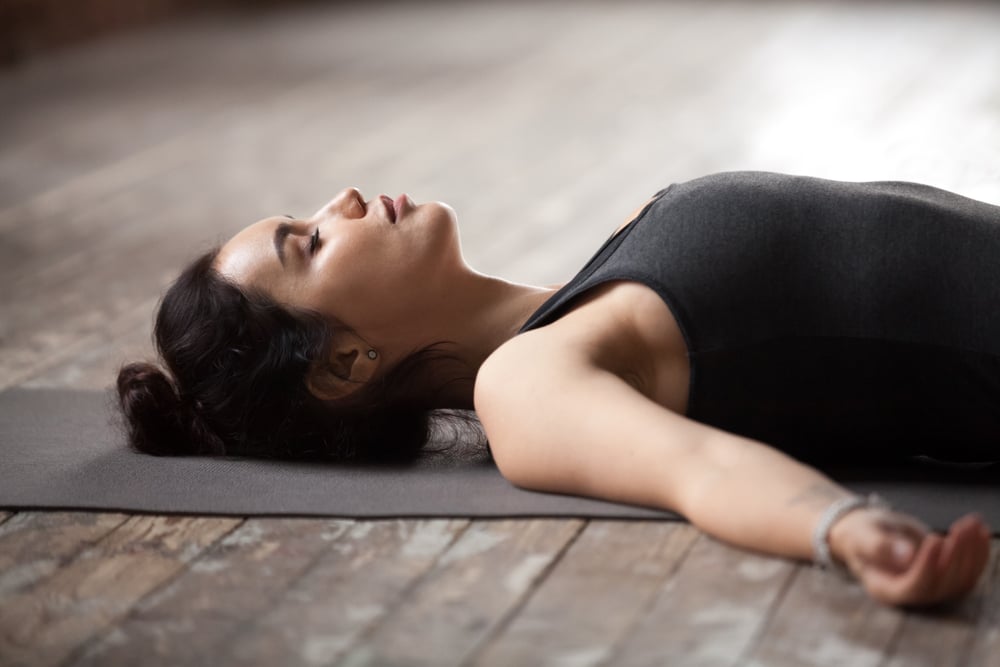
What Is Yoga Breathing?
Breathing normally and yoga breathing are very different. In order to understand what yoga breathing is, you’ll need a little background on yoga, first. Yoga has been around for over 5,000 years and originated in India. It’s a mind and body practice that combines physical postures, breathing techniques, and meditation in a variety of yoga styles. Yoga breathing, also known as pranayama, is the foundation for your yoga practice. It’s a type of controlled breathing that begins with deepening a 3-part breath, then moves into more advanced yoga breathing exercises, which we’ll cover in more detail.
Benefits Of Yoga Breathing
Yoga breathing, or pranamaya, has been shown to improve physical, mental, and emotional health. The most common benefits associated with yoga breathing include: [2]
- Reduced risk of hypertension
- Improves attention and focus
- Improves digestive system functions
- Boosts immune system
- Aids in healthy eating habits and weight loss
- Strengthens respiratory system
- Increases the GABA neurotransmitter (“nature’s chill pill”)
- Can relieves symptoms of chronic stress and mood imbalances
- Can help with PTSD symptoms
- Improves parasympathetic nervous system function (calms the fight or flight response, & reduces stress hormones)
Types Of Yoga Breathing Exercises
While pranamaya is the all encompassing term for yoga breathing, there are actually several types of yoga breathing techniques that have various purposes and benefits. These are a few of the most common yoga breathing exercises that can help reduce stress, anxiety, and improve your mind-body connection. No matter what pranamaya style you choose to practice, remember to breathe deeply through your diaphragm. Shallow breathing through the chest can cause light headedness so be sure to take deep breaths and engage your core.
1. Bhramari
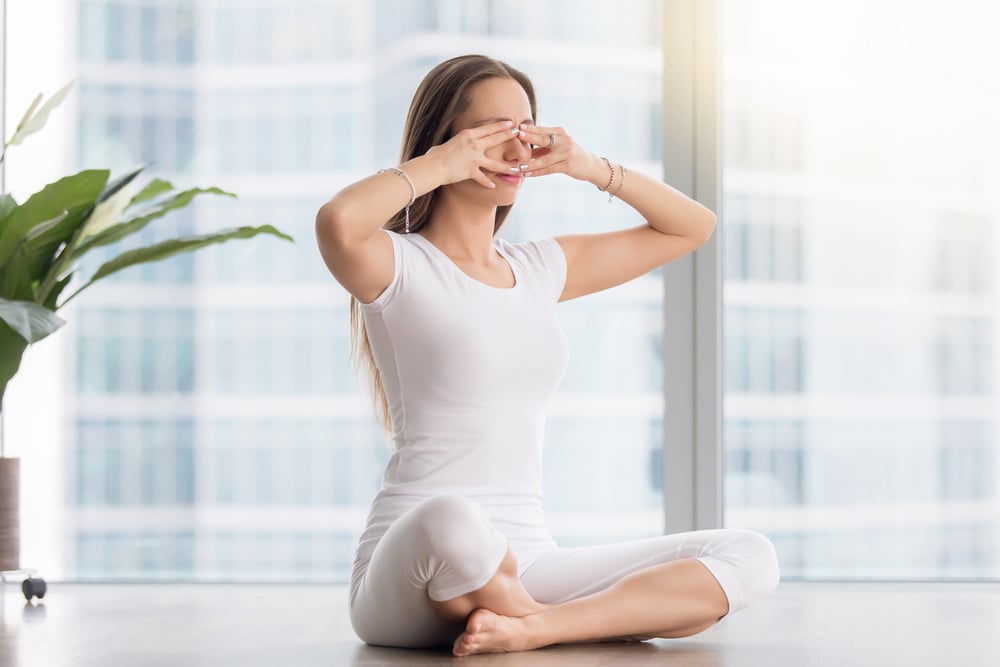
Does your mind run about a mile a minute or find yourself constantly thinking about what someone said to you? If you can’t seem to calm your mind or find that your stress or anxiety is brought on by a constant inner dialogue, then bhramari pranayama is for you. Bhramari is also known as “humming bee breath” and helps relax an overactive mind. This type of yoga breathing technique is great to add to your night time routine as it’s known to quiet the mind and promote better quality sleep.
How To Do It:
Find a quiet place and get into a comfortable sitting position. Place your index fingers in each of your ears to block any sound in your surrounding area. With your eyes and mouth closed, start by taking a deep breath in through your nose, activating your diaphragm. (Your tummy should move outward). Exhale slowly. While you exhale, make a humming sound. Repeat for about 3-5 minutes.
2. Kapalbhati
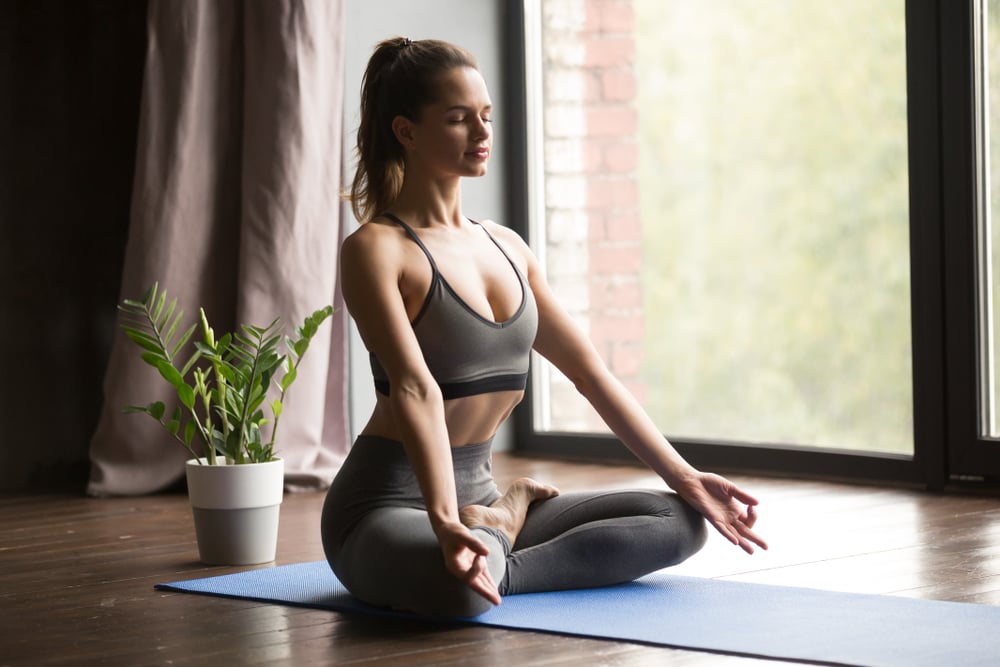
Kapalbhati is an intermediate to advanced type of pranayama that consists of short, powerful exhales and passive inhales. This exercise is a traditional internal purification practice that tones and cleanses the respiratory system by encouraging the release of toxins and waste matter. It acts as a tonic for the system, refreshing and rejuvenating the body and mind. This type of yoga breathing exercise pairs perfectly with a cup of ZzzTox tea. It contains eight powerful superfood ingredients that help release toxins from your body and fight stress-related weight gain.
How To Do It:
Begin in a seated position with your palms facing up on your knees. Bring your awareness to your lower belly and inhale deeply through both nostrils. Contract your low belly or use your hands to gently press on this area, forcing out the breath in a short burst. Begin slowly, aiming for 65-70 contractions per minute. Gradually quicken the pace, aiming for 95-105 exhalation/inhalation cycles per minute. Always go at your own pace and stop if you feel faint or dizzy. After one minute of the exercise, inhale deeply through the nostrils, and then exhale slowly through your mouth. Depending on your experience level, you may repeat the exercise.
3. Bhastrika
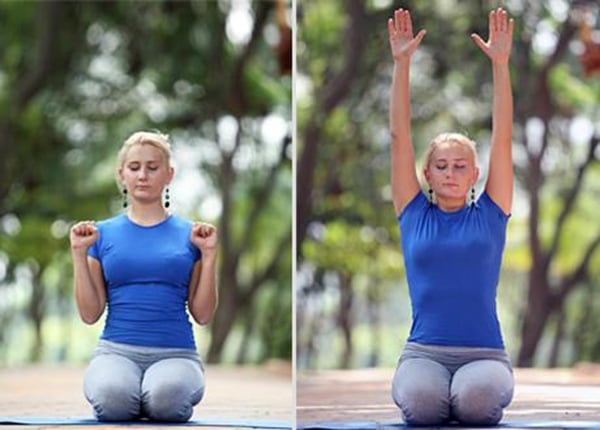
Bhastrika is known to increase your energy levels while calming the mind. With bhastrika, your body reacts in a way similar to how it responds to physical exercise—it demands more oxygen and increases the heart rate. The difference with this type of yoga breathing technique is that your body doesn’t have to experience physical exertion in order to do this.
How To Do It:
Sit in a comfortable position. Make a fist with your hands and place them near your shoulders. Inhale deeply and raise your hands straight up over your head and open your fists. Exhale forcefully and bring your arms back down, next to your shoulders with your fists closed. Continue and repeat for 20 breaths.
4. Ujjayi
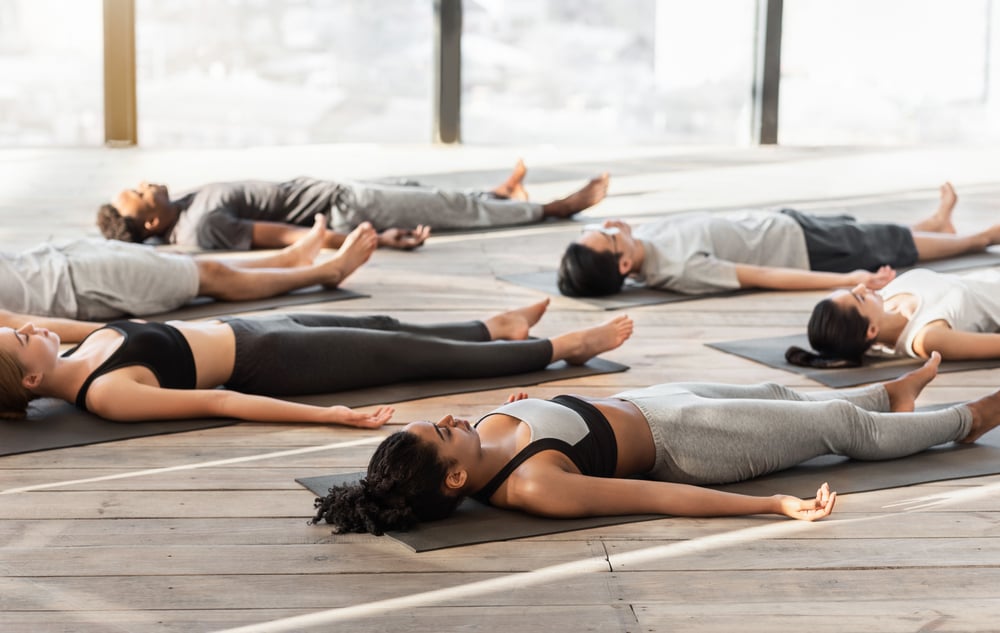
If you’ve ever taken a yoga class before, you’ve likely heard the instructor refer to your ujjayi breath. This is a very common yoga breathing technique and perfect for beginners. Ujjayi is known to connect your body and your emotions, which is why it made our list of the best yoga breathing exercises for reducing stress and anxiety.
How To Do It:
Start in a seated position with your hands resting gently on your knees. Take a deep breath in through your nose, making sure to activate your diaphragm. Exhale slowly through your nose and restrict the air with your throat, creating a sound that almost mimics snoring, or the sound of the ocean. Release the air completely and repeat.
5. Nadi Shodhan

If you can’t seem to concentrate, nadi shodhan is a good yoga breathing exercise to try. This technique calms and centers the mind by bringing into harmony the left and right hemispheres of the brain, which correlate to the logical and emotional sides of our personality.
How To Do It:
Sit in a comfortable position with your hands resting gently on your knees. Bring your right hand up to your face and close your right nostril using your thumb. Take a deep breath using your diaphragm and exhale slowly through your left nostril. Repeat on the left side.
Mentioned In This Post
SkinnyFit ZzzTox Tea
Stress less, sleep tight, and detox 24/7 with caffeine-free SkinnyFit ZzzTox! Our all-natural nighttime tea helps you slim down while enhancing your quality of sleep.
